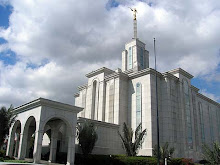
Last week, I went with Sister Boulter to look for some Christmas supplies for our office, and we got hungry. We saw a little restaurant with this meat cooking over the coals. They often do this and it is delicious. This place had a strange name. It was called Chiguiro. We didn't think too much about the name, but when we went in I noticed all the little napkin holders had a wooden shape of a little rodent. The waiter brought a plate for us to try the meat. When we asked what it was, he said Chiguiro. I looked at the napkin holders and asked is it a rodent. He said, "si, pero muy grande." I wanted to run, but Sister Boulter took her piece and said it was good. Okay we ordered and tried the Chiguiro. It was a new experience. I don't know that I am excited to run back and try it again.









